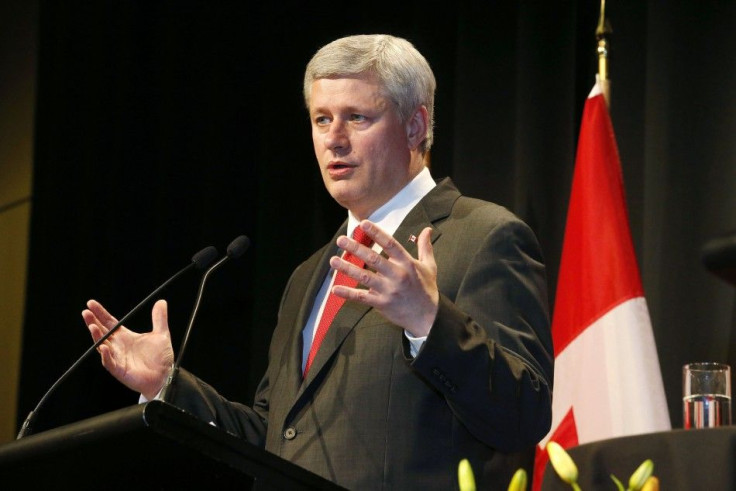Russian Frigates Shadowed Canadian Warship Carrying PM Stephen Harper In Baltic Sea

Canada’s charge that Russia is playing bully in Eastern Europe found one more assertion when two Russian military frigates reportedly shadowed a Canadian warship that was carrying Prime Minister Stephen Harper in his Baltic Sea cruise on Wednesday.
The tracking by Russian ships lasted for many hours and they came closer within seven nautical miles. Canadian sources described it as a cat-and-mouse game being played by Russia and NATO in the waters of Eastern Europe. According to sources, Russian vessels appeared in the vicinity of the Canadian frigate about mid-morning local time when it was about 15 to 18 nautical miles off the northern coast of Poland and kept breaking off to reappear again.
Harper’s Cruise
Mr. Harper was spending a day on HMCS Fredericton, a frigate that has been part of the North Atlantic Treaty Organization. According to a press release from the Prime Minister's Office, Mr Harper was touring the ship and also wanted to meet the crew to "personally thank them for their efforts to support NATO allies in Central and Eastern Europe, particularly in light of Russian aggression in Ukraine." The Canadian Prime Minister boarded the ship on Tuesday night and spent the whole night in the warship, the release said. Minister of Defence Jason Kenney also joined him on the visit.
The frigate was part of the mission to reassure Eastern Europe members that there will be protection if Russia resorts to any adventure as in Ukraine. Defence Minister Jason Kenney, described the Russian frigates’ movements as deliberate. “Starting three hours ago, they changed course due west and headed in the trajectory of Fredericton,” Kenney told reporters. Asked for his comment on what happened, Kenney said. “It is what it is.”
Not Surprised
According to NATO commanders, encounters with the Russians have been on the rise whenever NATO vessels are closer to Russian territory. “I assume they were taking a look,” said Commander Jeff Murray, who captains the Fredericton. He also noted, “We’re in their backyard. Especially with Baltic Ops where it’s like they’re the kid who didn’t get invited to play in the sandbox.”
According to NATO, 49 ships, 61 aircraft and a submarine are taking part in naval drills in the Baltic Sea that is set to last until June 20. Allied participation demonstrates NATO's resolve to defend the Baltic region, and will hone the ability of Allies and partners to work together, a NATO release said. It also added that being an annual exercise since 1971, it is not in “response to any specific threat."
(For feedback/comments, contact the writer at k.kumar@ibtimes.com.au)






